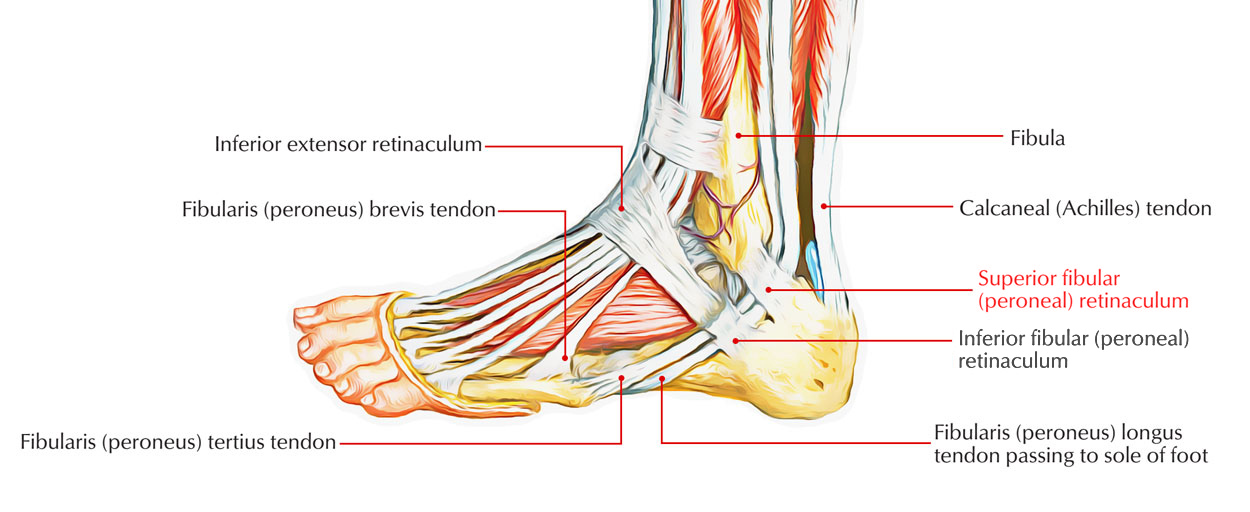The superior peroneal retinaculum is among two fibrous bands which connect the peroneus longus as well as peroneus brevis muscle tendons that overlap the ankle’s lateral side. While these muscles support the lateral ankle as well as evert or externally bend the foot, the superior peroneal retinaculum makes a fibro-osseous (made up of both the fibers and bone) tunnel via the retromalleolar groove, working to prevent peroneal subluxation, a condition where the peroneal tendons snap out of place.

Superior Peroneal Retinaculum
The superior peroneal retinaculum is also called the external annular ligament. Its fibers are linked to the lateral malleolus (the bony forecasts at the beyond each ankle) and the calcaneus‘s (heel bone) lateral surface.
Clinical Significance
- Superior peroneal retinaculum injuries, in addition to diseases such as tenosynovitis, can trigger pain and inconsistency in the lateral ankle.
- Thankfully, this kind of conditions can be fixed by cosmetic surgery, which straight repair works the ankle’s superior peroneal retinaculum; nevertheless, this is hard in patients with inadequate structural residues.
- Superior peroneal retinaculum (SPR) injuries describe a spectrum of intense and long term injuries to the superior peroneal retinaculum in the ankle. They are among the reasons for lateral ankle pain as well as instability.
x

